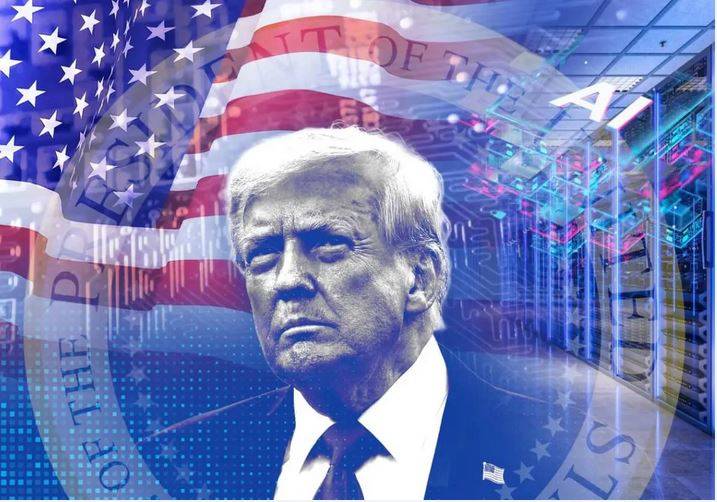1837 Views
America’s Green Gap: Can AI Save Its Place in the Global Race?
Entering the era of a decarbonized economy is no longer merely an environmental issue; it has become one of the most central factors in industrial competition. Countries that can transition earlier to low-carbon and sustainable models will not only reduce climate risks but also secure future technological and market advantages. In this global race, the United States faces a series of challenges—from lagging behind China and the European Union in industrial decarbonization, to global market pressure to meet environmental standards, the growing role of artificial intelligence in energy, and instability in U.S. macro policies that makes the future harder to predict. If the U.S. fails to adopt a clear strategy in the next decade, its competitive position in the global market will be at risk.
America’s Lag in the Green Race
Although the United States has long been a leader in technological innovation, it has fallen behind in industrializing the decarbonization process. Weak coordination of federal policies, frequent changes in environmental regulations, and low levels of government investment in clean energy infrastructure all indicate what can be described as “America’s lag” in the green competition. Many major U.S. industries remain dependent on fossil-fuel-based processes and equipment, and the costs of transitioning to low-carbon technologies are steep.
This lag is particularly visible in carbon-intensive sectors such as steel, cement, and petrochemicals, where investments in technologies like low-carbon steel or advanced catalysts require long-term policy stability—something the U.S. has lacked.
China and the EU Take the Lead
In contrast, China and the European Union are already at the forefront of the green-industrial race. China, with massive investments in solar panels, wind turbines, and green steel production, has positioned itself as a leader in clean energy supply chains. For example, the Chinese government has supported renewable energy projects and clean industrial production, even shifting steel industries away from traditional methods toward less polluting alternatives. In the first half of 2024, China approved no new coal-based steel projects, focusing instead on lower-carbon methods to prepare for the EU’s carbon border adjustment mechanism (CBAM).
Meanwhile, the European Union is reshaping global trade rules with instruments such as CBAM and the Emissions Trading System (ETS). CBAM imposes a carbon tariff on imports of high-emission goods, preventing “carbon leakage” and forcing foreign producers to comply with EU standards. ETS, in many EU member states, sets the price of carbon through market mechanisms, creating incentives for emission reductions.
This combination of regulatory tools not only defines Europe’s own commercial environment but also sends a strong global signal: the future green competition will be based on environmental requirements.
External Pressures on U.S. Companies
Even if U.S. federal regulations on green technologies remain inconsistent or weak, global market forces and investor demands are pressuring American companies to comply with green standards. Exporters to Europe must meet CBAM requirements or face additional costs. Major buyers, banks, and investment funds increasingly prioritize ESG performance, forcing companies to meet environmental benchmarks to secure financing. As a result, many U.S. companies are moving toward clean industrialization not due to domestic mandates, but to remain in global supply chains and avoid financial risks.
The Role of Artificial Intelligence in Decarbonization
One of the greatest hopes for narrowing the U.S. decarbonization gap lies in harnessing artificial intelligence in energy. AI can optimize energy use, reduce waste, and enhance efficiency in industrial processes through data analysis and predictive algorithms. For instance, in power plants or steel factories, machine learning models can adjust operational parameters in real time to minimize energy consumption.
In smart grids, predictive algorithms for weather, demand, and renewable output help optimize electricity flow and reduce losses. Deep reinforcement learning (DRL) can also fully optimize microgrid systems for multiple objectives, cutting costs while improving performance. If the U.S. can leverage its technological edge in AI and apply it to the energy sector, it could close part of the green race gap.
Political Instability and Industrial Foresight
The greatest obstacle facing the U.S., however, is political instability in climate policy. Each new administration may take a different approach to environmental regulations, creating uncertainty for investors and industries. Large industrial projects require long-term outlooks, and policy volatility generates risks for clean technology investments.
That said, many U.S. states (such as California, New York, and Washington) have independently advanced clean energy laws and decarbonization regulations, showing that local initiatives can provide partial solutions. Yet, without federal unity, these fragmented efforts cannot guarantee national leadership in the global race.
As 2030 approaches, evidence shows that “sustainability” will become a central indicator of economic and industrial power. Countries whose industries fail to meet emission reduction standards by then risk being excluded from major markets.
Thus, the global race for industrial decarbonization is not merely an ethical or environmental matter but one of the key determinants of future economic standing. The U.S. currently lags behind China and the EU. Tools such as CBAM and ETS have already shifted the rules of the game, putting U.S. companies under global market pressure. Meanwhile, emerging technologies like AI in energy may offer a chance to catch up—if political stability allows. Without a coherent national strategy for clean industrial production, the U.S. risks falling further behind in the coming decades and losing its sustainable competitiveness.
Translated by Ashraf Hemmati from the original Persian article written by Mohammad Mehdi Esmaeil-Khanian

Comment
Post a comment for this article